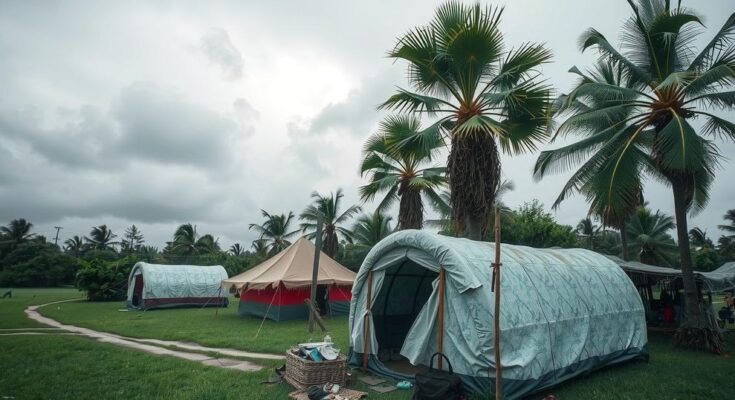Tropical Cyclone Jude struck Mozambique on March 10, 2025, causing extensive damage and humanitarian needs. Response efforts are strained due to previous cyclones. Temporary accommodation facilities have been established, but many are not officially recognized. Urgent assistance for food, water, and education is required to improve conditions for affected populations.
On March 6, 2025, a low-pressure system developed in the southwestern Indian Ocean, transforming into Tropical Cyclone Jude. Upon making landfall on March 10 in Mossuril, Nampula province, it produced wind gusts of 195 km/h and heavy rainfall exceeding 250 mm in 24 hours. This catastrophe impacted districts in Cabo Delgado and Zambézia provinces, leading to infrastructure damage, loss of life, and a rise in humanitarian needs in both urban and rural areas.
The northern region’s humanitarian response capabilities are currently under significant strain due to the effects of two preceding cyclones: Cyclone Chido in December 2024 and Cyclone Dikeledi in January 2025. As a result, anticipatory actions regarding flood and cyclone response were activated by the Technical Council for Disaster Risk Reduction and Management (CTGD) on March 8, prompting the CCCM’s response in Angoche and Mogincual. Preparation efforts included pre-positioning repair tools, communicating readiness messages to communities, engaging with disaster risk reduction committees, and providing support to the National Institute of Disaster Management (INGD).
Local authorities have activated accommodation centers in various Nampula and Zambézia districts, deploying site management teams for initial assessments, coordination, and management. Following assessments conducted by CCCM and DTM teams, 59 temporary accommodation facilities were identified across nine Nampula districts and one in Namacurra, Zambézia. However, most of these sites lack formal recognition as official accommodation centers, complicating the humanitarian response. Enhanced collaboration between the CCCM Cluster, CCCM/DTM teams, and local authorities is necessary for accurate mapping and effective support.
Many families are currently commuting at night to find refuge in temporary facilities such as schools, churches, and health centers, as they attempt to rebuild their homes or create makeshift shelters. There is an urgent requirement for food, water, shelter, health services, non-food items, sanitation, hygiene, education, and nutrition to improve living conditions for these affected populations. It is imperative to provide dignified living environments and strengthen coordination mechanisms, including fire safety awareness and cholera prevention efforts, while establishing essential services like handwashing stations and communal toilets to alleviate waiting times for assistance.
The cyclone’s aftermath has devastated communities by damaging schools, hindering children’s education recovery. Coordinated efforts are crucial to assist displaced families and facilitate educational continuity. Partners are urged to collaborate and include education-related needs in their response plans to mitigate the cyclone’s long-term consequences. The CCCM Cluster continues to update and maintain listings of temporary accommodation facilities with the cooperation of DTM and local authorities, but many families leaving these sites contribute to both planned and unplanned deactivations due to challenging conditions.
In summary, Tropical Cyclone Jude has significantly affected Mozambique by causing extensive damage and humanitarian challenges. The northern region’s response capabilities are overburdened following previous cyclones, necessitating immediate support for affected communities. Coordination among various stakeholders is essential to ensure effective assistance, improve living conditions in accommodation facilities, and address educational needs to facilitate recovery from the cyclone’s impacts.
Original Source: reliefweb.int




